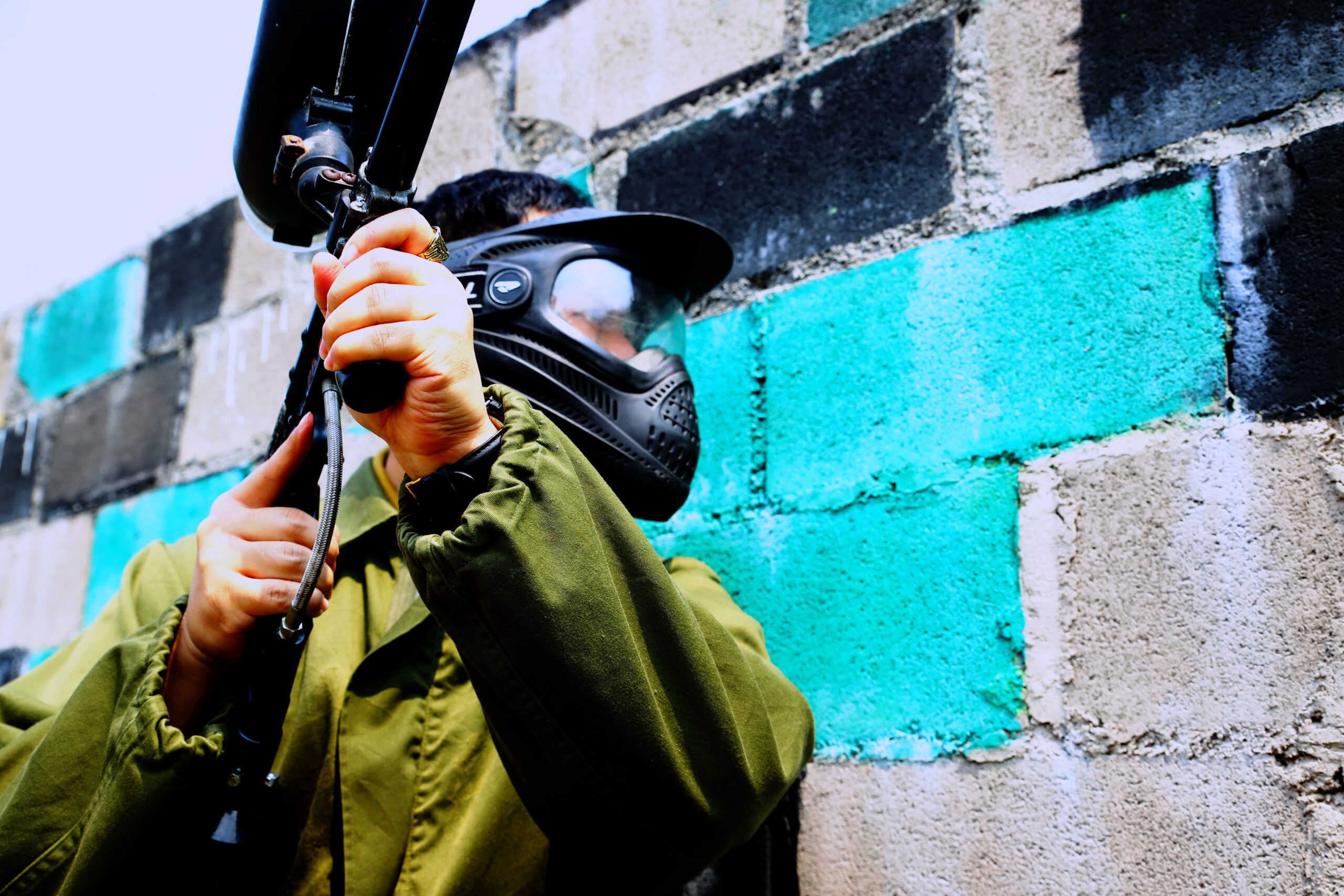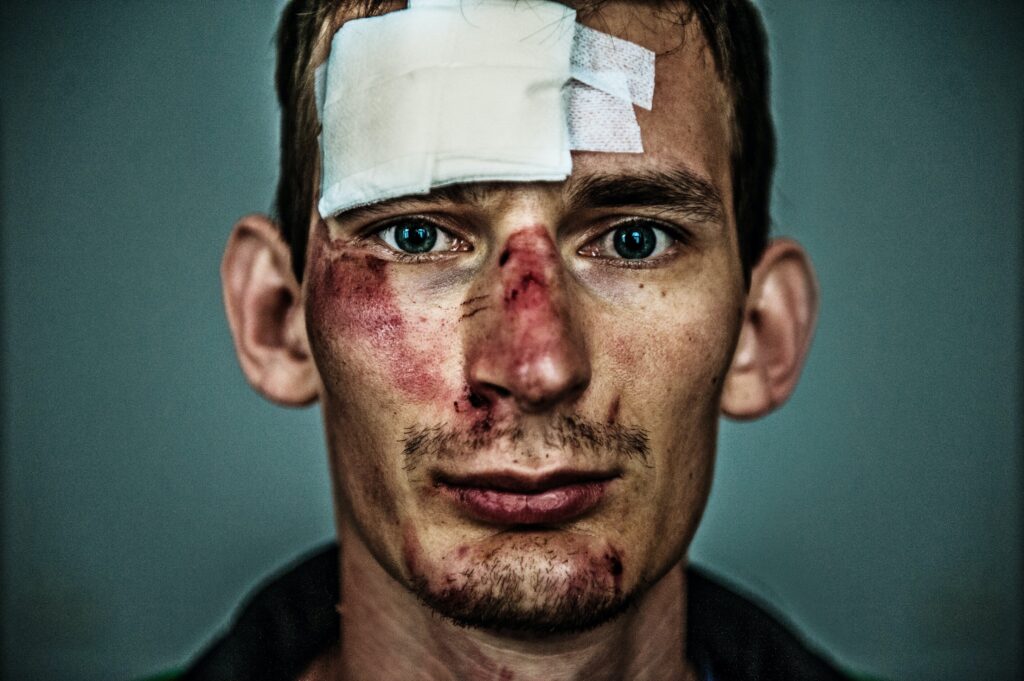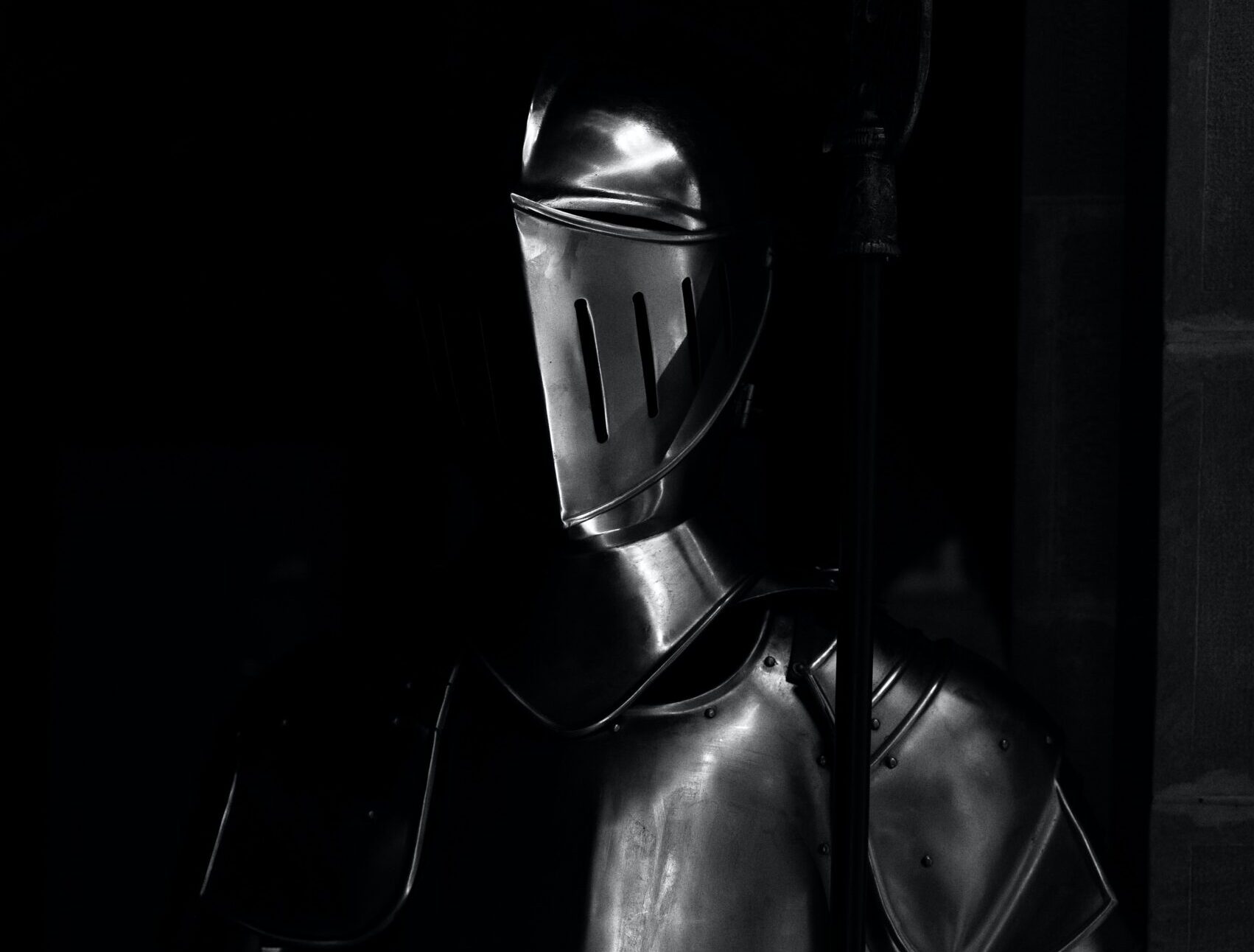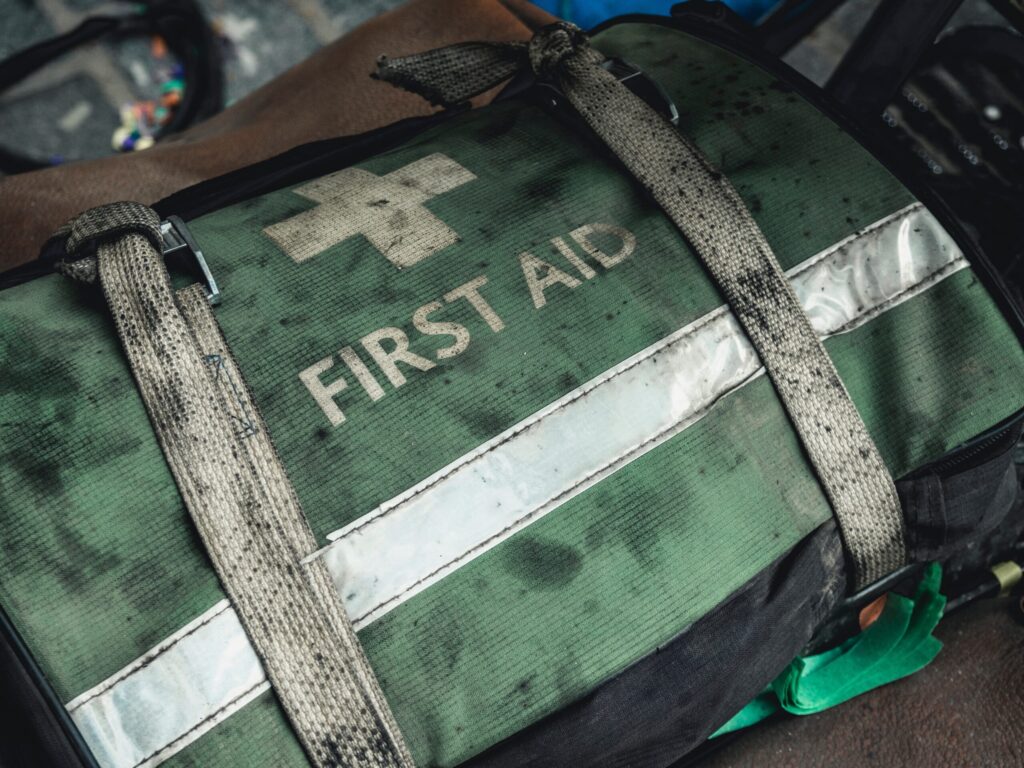Does Paintball Hurt? 3 Eye-Opening Answers About Paintball

Worried about how painful paintball will be?
We know that paintball can seem intimidating, but it doesn’t have to be.
Paintballs are designed so they don’t hurt when you get hit.
But there are certain factors at play here; like where the paintball hits, the velocity of the ball and your own clothing or protective gear choices.
With our comprehensive guide, learn all the details around how much paintball hurts, what factors make a difference in possible pain levels, and most importantly – tips on prevention and treatment for any potential injuries or wounds that might occur during a paintball game.
Keep reading this article to get the answer to this popular question: how much does paintball hurt?
1. Pain Factors

When it comes to paintball, the amount of pain depends depending on a many factors.
These include:
- The distance between you and your opponent when the shot is taken
- The velocity of the ball when it makes contact with your body
- Your clothing and any gear you might be wearing at the time
- Where on your body the ball hits – certain places are more sensitive than others
Although paintballs don’t generally cause injury, they can leave behind a bruise or welt depending on how hard and where you were hit.
Even if you’re wearing protective gear, these marks may still occur.
Be sure to always follow safety protocols while you play paintball to ensure an enjoyable and safe experience for all.
Side Note: the pain of airsoft pellets may also be an interesting topic if your play with airsoft guns instead of paintball.
How Much Pain Does a Paintball Cause?
Generally, the feeling of a paintball hit is not painful.
Normally with most hits, the worst you can expect is a light sting and some redness on your skin.
However, if the ball hits you at close range and with enough velocity, it may cause more discomfort.
In most cases, any pain felt will be fleeting and should go away after a few minutes, all depending on the player’s pain tolerance.
It’s important to keep in mind that not everyone has the same pain threshold – what might feel like a minor annoyance to one person could be intensely painful for another.
Additionally, depending on where you’re hit, certain areas of the body are more sensitive than others – such as the head or neck area.
If you do get hit in these areas, you may feel more pain than if the ball had hit your arm or leg.
Overall, paintball should not be painful – especially when playing with the right equipment, clothing and protective gear.
By following all safety protocols and using common sense during gameplay, you can make sure that everyone has a fun and safe time.
What Does Getting Hit by a Paintball Feel Like?
The simplest way to describe what getting hit by a paintball feels like is getting snapped by the corner of a wet towel.
You could also compare it to getting snapped with a rubber band, or a very firm flick from a finger.
It might cause a slight sting depending on the velocity and distance, but it’s usually nothing too intense.
Most people find that the sensation quickly fades and any welts or bruises left behind by the paintball are minor.
However, if you feel like the pain is more than just an annoyance, don’t be afraid to take a break from playing – your safety should always come first.
Distance From the Shot
It’s a known fact that the further away your opponent is when they shoot, the less painful it will be for them.
This is because paintballs lose velocity over distance due to drag from the air, wind, and gravity, meaning the closer you are to where the shot was taken, the greater impact it will have on your body.
Pro Tip: A paintball gun usually fires paintballs at a velocity of approximately 90 m/s (300 ft/s), though most fields impose a limit of 280-300 ft/s, and indoor sites may further reduce how fast the ball travels to 250 ft/s.
Although it is possible to increase the muzzle velocity, this has been deemed unsafe for use on most commercial paintball fields.
Generally speaking, if you’re more than 50 feet away from where the ball was shot, you shouldn’t feel too much pain.
But if you’re hit from only a few feet away, it will hurt worse.
How Many Consecutive Shots You Take
If you take several consecutive shots in the same spot on your body, it is going to hurt more.
This is because the impact of each shot will cause a buildup of pressure in that area.
To avoid this, make sure you keep moving and stay aware of your surroundings during gameplay.
Where You Get Shot
The most sensitive areas of your body are the ones with thin skin.
These include the head, neck, hands, and fingers.
Getting shot in any of these areas is going to hurt more than if you get hit on your torso or arms where you have more “meat.”
2. How to Prevent Paintball Wounds in the First Place

The best way to prevent pain and injury from paintball pellets is to prepare with safety gear, use common sense when playing, and follow all safety protocols.
Wearing proper padding and protective clothing will help cushion the impact of incoming shots.
Additionally, make sure that you have goggles or face masks on at all times during gameplay for added protection.
It’s also important to maintain a safe range between yourself and your opponent – the farther away they are when shooting, the less force it will hit with.
Finally, abide by any mercy rules set by your field or tournament organizer so that everyone can enjoy paintball safely.
Use Quality Paintballs
Using quality paintballs is important because it helps to ensure the integrity of your opponent’s protection and minimizes the chances of a too-hard hit.
Paintballs that have a harder shell can cause excessive bruising, leave welts, and even break skin if shot from close range.
Moreover, lower quality paintballs can break inside paintball guns causing inconvenience for players because they have to clean their marker.
Before heading out to play, make sure you always use high-quality paintballs that are properly stored and well-maintained.
Safety Tip: Never freeze paintballs before use. This is very dangerous!
Wear Protective Gear
Make sure you wear paintball gear to help reduce or eliminate the potential pain of getting hit by a paintball.
We suggest the following pieces of gear or thick clothing to help to cushion the impact of paintballs and reduce the amount of pain felt.
You can find all of this gear on many of the online paintball stores we’ve compiled on our site.
Paintball Mask
A paintball mask, also known as a goggle or facemask, is designed to protect the face, mouth, eyes and ears when playing paintball.
Paintball masks are a must-have for playing any game of paintball, and required at commercial fields.
Make sure you find the best paintball mask for your style of play before you head to the field.
Paintball Helmet
A paintball helmet provides additional protection for the head along with the face mask when playing paintball.
Paintball Jersey
A paintball jersey is a type of lightweight shirt that offers protection and comfort when playing paintball.
It’s typically made with padding around the shoulders, arms, chest and back to provide extra cushioning for when you get hit by a paintball.
A long-sleeve T shirt is also better than nothing if you can’t afford a paintball jersey.
Paintball Gloves
Paintball gloves are specially designed gloves made with padding and extra grip to protect your hands from the impact of a paintball.
Wear gloves to help you keep a good grip on your gun, which is important for aiming accurately.
Paintball Pants
Paintball pants are designed to provide additional protection to your legs from paintballs.
They typically come with padding around the hips, thighs, and knees for extra cushioning when you get hit.
Paintball pants also offer a lot of mobility, allowing you to move freely while playing.
If you’re looking for a cheaper option, baggy jeans are also a good solution for protecting your legs.
Paintball Elbow Pads
Paintball elbow pads are designed to protect your elbows where there is thin skin from getting hit by a paintball.
Paintball Vest
A paintball vest or chest protector cushions shots around the chest and back area.
It usually comes with padding around the shoulders, arms, and torso for extra protection against incoming shots.
Some even offer neck protection.
Groin Cup Protection
A groin cup is a type protects the genitals from paintball shots.
It’s important to wear one, especially when playing in close quarters where you’re at higher risk of getting hit in your most sensitive area.
Paintball Footwear
Paintball shoes are specially designed shoes made with extra grip like cleats, cushioning, and ankle support.
They help provide extra stability when running on the field and reduce the impact of paintballs on your feet where there is thin skin.
Wearing good quality, supportive footwear is important to help you stay on your feet throughout the game and help protect your feet.
Hiking boots can also be a great alternative to shoes specifically designed for paintball.
Follow Safety Guidelines
You should always follow the safety guidelines of the field you’re playing at to help keep everyone safe and reduce the chances of getting injured.
Make sure you stay within the designated boundaries, use proper protective gear, and follow all the rules outlined by your field’s officials.
Though paintball is a competitive and adrenaline-filled sport, remember to always be respectful to your opponents.
Barrel Covers
A barrel cover is an essential safety tool that should be used at all times when not actively playing.
This helps keep the barrel of the paintball gun covered to prevent damage or injury to an unintended target in case it is accidentally discharged.
Mercy Rule
To make the game safer, a lot of paintball fields have a “mercy rule” that goes something like this:
When an opposing player is point blank or within a close distance to you, or the you are unaware of the opposing player’s position (generally behind you) within that distance, the opposing player would shout “MERCY!”
You then have a moment to either yell “OUT,” or return fire.
After the advancing player has waited for you to respond, they are allowed to either shoot you or move on and let you continue to play.
Whether you want to get shot at close range is up to you…
Low Impact Paintball
Low impact paintball may also be a great alternative for players who are concerned about paintball wounds.
Check out our guide on low impact paintball to learn more now!
3. How to Treat Paintball Wounds

Paintball injuries are usually minor and not serious, but it’s still important to know how to treat them.
The most common paintball injury is a bruise or welt where the paintball has hit you.
This can be painful, but there are some simple steps to take for treatment:
Wash the Affected Area
Be sure to clean the area with soap and water and pat dry.
This will help reduce the risk of an infection.
Use an Over-the-Counter Pain Reliever
Take an over-the-counter pain reliever like ibuprofen or acetaminophen to help reduce the pain and inflammation of a paintball bruise.
You can also use a topical cream like Ben Gay, Icy Hot, or Tiger Balm to relieve soreness in the affected area.
Bathe in Epsom Salt
Epsom salt is a great natural remedy for any bruises or soreness.
Simply add some Epsom salt to warm water and let the affected area soak in it for 20 minutes – either in a bath or just submerge the area in a tub.
This can help reduce swelling and speed up the healing process.
Use a Hot or Cold Compress
A hot or cold compress can also help reduce pain and swelling.
Apply a cold pack or warm cloth to the affected area for 10 minutes at a time.
Repeat this several times throughout the day if needed until the bruise or welt is healed, or the pain subsides.
Elevate the Wound
Finally, keep the affected area elevated above your heart to reduce swelling.
If possible, lie down and put a pillow or cushion under the injury.
This will help reduce inflammation and pain more quickly.
Wrap Up
Paintball is an exciting and fun sport for all ages.
While paintball does pose some risk of injury, following the above tips can help reduce or prevent your chances of getting hurt and make the game safer for everyone involved.
Wear safety gear, always follow safety guidelines, use common sense and respect on the field, and know how to properly treat any injuries that may occur.
Have fun and stay safe during your next round of paintball!
Frequently Asked Questions (FAQ)
Does Paintball Hurt for a 13 Year Old?
The short answer is yes.
Paintball has the potential to hurt players of any age, but most people find that it doesn’t cause a lot of pain.
It’s important for 13-year-olds when they learn how to play paintball to wear defensive gear and follow the safety guidelines outlined by the field they start playing at in order to reduce their chances of getting injured.
Additionally, using proper technique such as keeping the gun pointed in a safe direction and taking cover when needed will help keep them safe.
If they do get hit, it’s important to know how to properly treat any bruises or welts that may occur as we mentioned earlier in this post.
Following these steps should help make paintball an enjoyable experience not just for teenagers, but for all of the other players.
How Sore is Paintball?
Paintball can cause some soreness, depending on several factors like:
- The distance between you and your opponent when the shot is taken
- The velocity of the ball when it makes contact with your body part
- Your clothing and any gear you might be wearing at the time
- Where on your body the ball hits – certain places are more sensitive than others
Generally, paintball is less painful than many people expect.
For most players, the sensation of getting hit is more like a jolt and a sting rather than intense pain.
Does Paintball Injure Bare Skin?
Yes, paintball can hurt exposed skin.
Paintballs are made of a hard – but breakable – shell and filled with a water-soluble dye, and when they hit your body, they burst and spread the dye over you.
The force of being hit can cause bruises or welts, especially on unprotected areas, so it’s important to wear the right safety gear and clothing.
Does Paintball Cause Pain for a Girl?
Paintball can hurt both boys and girls alike, so it’s important to take the necessary precautions when playing.
Wear the right equipment to protect yourself from paintballs.
